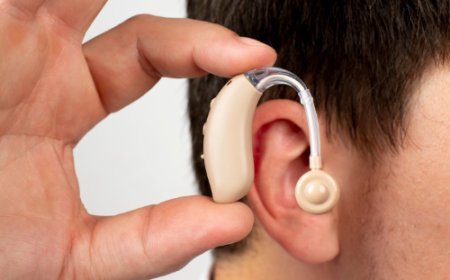How to Get Rid of Tooth Pain: Effective Home Remedies & Professional Treatments
Tooth pain can strike anytime, during meals, in the middle of the night, or even when you're doing absolutely nothing. The dull ache, sharp sting, or throbbing discomfort can quickly disrupt your day and even your sleep. Fortunately, there are several ways to get relief, both at home and with professional help. In some severe cases, prescription medications like Tapentadol is recommended for short-term pain management under a doctor’s supervision.
What Causes Tooth Pain?
Before jumping to solutions, it's important to understand the root cause (pun intended) of your toothache. Common reasons include:
-
Tooth Decay (Cavities): The most common cause of pain.
-
Gum Disease: Inflammation or infection in the gums can cause radiating pain.
-
Tooth Abscess: A bacterial infection at the root of the tooth.
-
Cracked or Damaged Tooth: Often results in sharp pain, especially when chewing.
-
Tooth Sensitivity: Pain when consuming hot, cold, or sweet foods.
-
Impacted Wisdom Tooth: A tooth that hasn't erupted properly may cause intense pain.
-
Sinus Infection: Can sometimes cause referred pain in the upper teeth.
Once you identify the cause, treating the pain becomes more targeted and effective.
Home Remedies to Relieve Tooth Pain
If you can’t get to the dentist right away, try these natural and over-the-counter remedies to ease your discomfort temporarily.
1. Saltwater Rinse
Mix 1/2 teaspoon of salt in a glass of warm water. Swish it in your mouth for 30 seconds and spit it out. It reduces inflammation, fights bacteria, and soothes the pain.
2. Cold Compress
If your face is swollen or the pain is due to injury or inflammation, place an ice pack on the outside of your cheek for 15–20 minutes.
3. Clove Oil
Clove oil contains eugenol, a natural numbing agent. Dab a small amount onto a cotton ball and place it on the sore tooth. Don’t swallow it.
4. Hydrogen Peroxide Rinse
Mix equal parts of 3% hydrogen peroxide and water. Swish in your mouth to reduce bacteria and relieve pain from infections.
5. Over-the-Counter Pain Relievers
Ibuprofen or acetaminophen can temporarily reduce inflammation and relieve pain. Avoid placing aspirin directly on your gums—it can burn tissue.
6. Garlic Paste
Crush a garlic clove, mix with a bit of salt, and apply it to the painful area. Garlic has antibacterial and analgesic properties.
7. Peppermint Tea Bag
Cool a used peppermint tea bag and place it against the painful area. Peppermint contains menthol, which has a mild numbing effect.
When to See a Dentist
While home remedies can offer short-term relief, they’re not substitutes for professional care. You should see a dentist if:
-
The pain lasts longer than 1–2 days
-
You experience swelling or fever
-
There’s pus or foul taste in your mouth
-
You have difficulty swallowing or breathing
-
You suspect a cracked or abscessed tooth
Dental problems left untreated can worsen and become more expensive or dangerous over time.
How Dentists Treat Tooth Pain
Depending on the cause, your dentist may recommend one of the following treatments:
1. Filling or Bonding
For cavities or small cracks, your dentist can clean out the decay and fill it with a dental composite or amalgam.
2. Root Canal Treatment
If the tooth’s pulp is infected, a root canal removes the infection and seals the tooth to prevent further damage.
3. Tooth Extraction
For severely damaged or infected teeth that can’t be saved, removal may be the only option.
4. Antibiotics
If you have a bacterial infection or abscess, your dentist may prescribe antibiotics to control it before further treatment.
5. Desensitizing Treatments
For sensitivity-related pain, fluoride treatments, dental sealants, or special toothpaste may be recommended.
Tooth Pain Myths to Avoid
When you’re in pain, it’s tempting to try anything, but not all advice is good. Avoid these myths:
-
“Put aspirin directly on your tooth.” This can burn your gums.
-
“Ignore the pain—it’ll go away.” Pain is a warning sign. Don’t wait until it gets worse.
-
“Extracting the tooth is the best solution.” Saving the natural tooth is always the first goal when possible.
How to Prevent Tooth Pain
Prevention is always better (and cheaper) than cure. Here’s how to protect your teeth from future pain:
-
Brush twice daily with fluoride toothpaste.
-
Floss once a day to remove hidden debris.
-
Limit sugary and acidic foods that can cause decay.
-
Use a mouthguard if you grind your teeth at night.
-
Visit your dentist every 6 months for regular checkups.
-
Avoid smoking—it increases your risk of gum disease and tooth loss.
What About Painkillers Like Tapentadol?
In severe cases, such as post-surgical dental pain, your dentist might prescribe a stronger painkiller like Tapentadol (Aspadol 100 mg). These medications work on the brain’s pain receptors and provide fast relief. However, they should only be used under strict medical supervision due to their addictive potential and side effects.
Final Thoughts
Tooth pain can disrupt your life, but it doesn’t have to control it. With the right combination of home care and professional treatment, you can get fast relief and long-term dental health. Remember, the key is not just to mask the pain, but to treat the cause.
Don’t wait—whether it's a cavity, infection, or sensitivity, addressing dental pain early will save your smile (and your wallet) in the long run.
What's Your Reaction?




























































